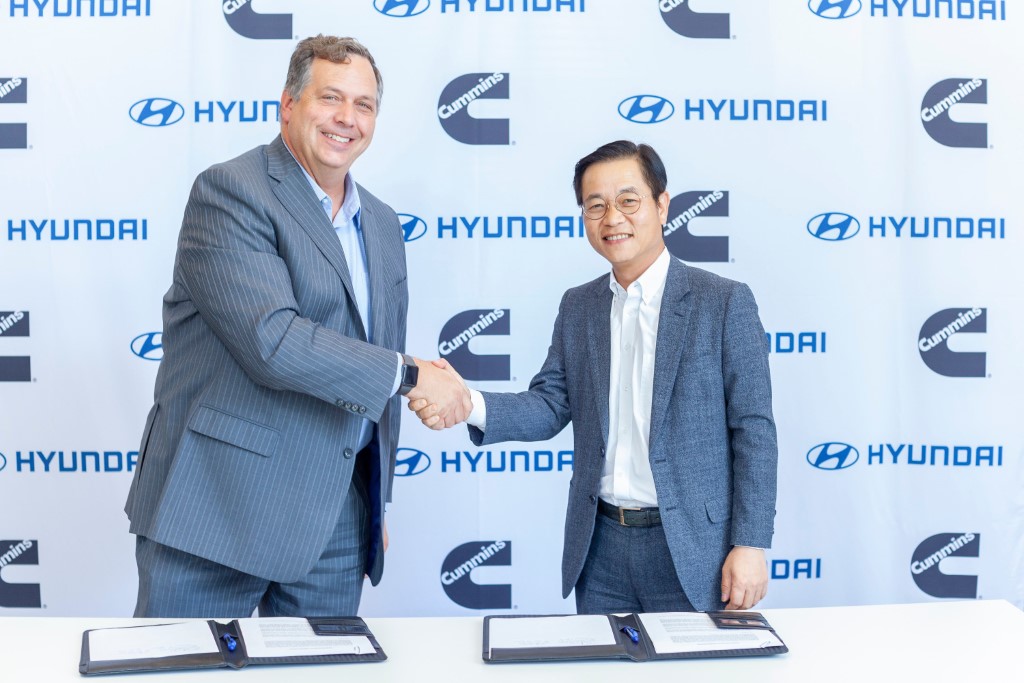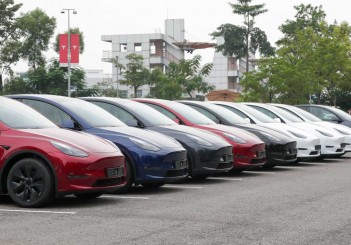These new powertrains are expected to be developed by combining Hyundai’s fuel cell systems with Cummins’ electric powertrain, battery and control technologies; the initial development will be focused on the North American commercial vehicle market.
“We’ve made significant investments over the past year to accelerate our fuel cell capabilities including our acquisition of Hydrogenics and this partnership is another step forward,” said Thad Ewald, Vice President, Corporate Strategy, Cummins Inc.
“With Hyundai’s global leadership in fuel cell systems coupled with Cummins’ unparalleled electrified powertrain technologies, we expect this partnership to leave a mark in the commercial vehicle market,” said Saehoon Kim, Vice President and Head of Fuel Cell Group at Hyundai Motor Group.

The NEXO.
The new collaboration may extend beyond the commercial vehicle market, as the companies will also evaluate the development of fuel cell power generators.
The availability of reliable back-up power generation to prevent data loss in emergency situations is a business-critical requirement for many organizations.
Fuel cell back-up power generation is attractive for its reduced carbon footprint.
Hyundai Motor is a world leader in the development of hydrogen fuel cell technology, having opened the world’s first commercial production facility for fuel cell vehicles in 2013, and released the world’s first commercialised hydrogen-powered vehicle, the Tucson Fuel Cell, in 2015.
The NEXO, Hyundai’s second-generation fuel cell electric vehicle with a range of over 610 kilometers, is a versatile, three-row SUV that emits clean water vapor and even purifies the air while driving.
Hyundai fuel cell systems are comprised of fuel cell stacks which convert stored hydrogen into electricity, as well as other sub-components — collectively referred to as balance of plant (BoP) —for thermal management and air supply among other integral processes for power generation.










